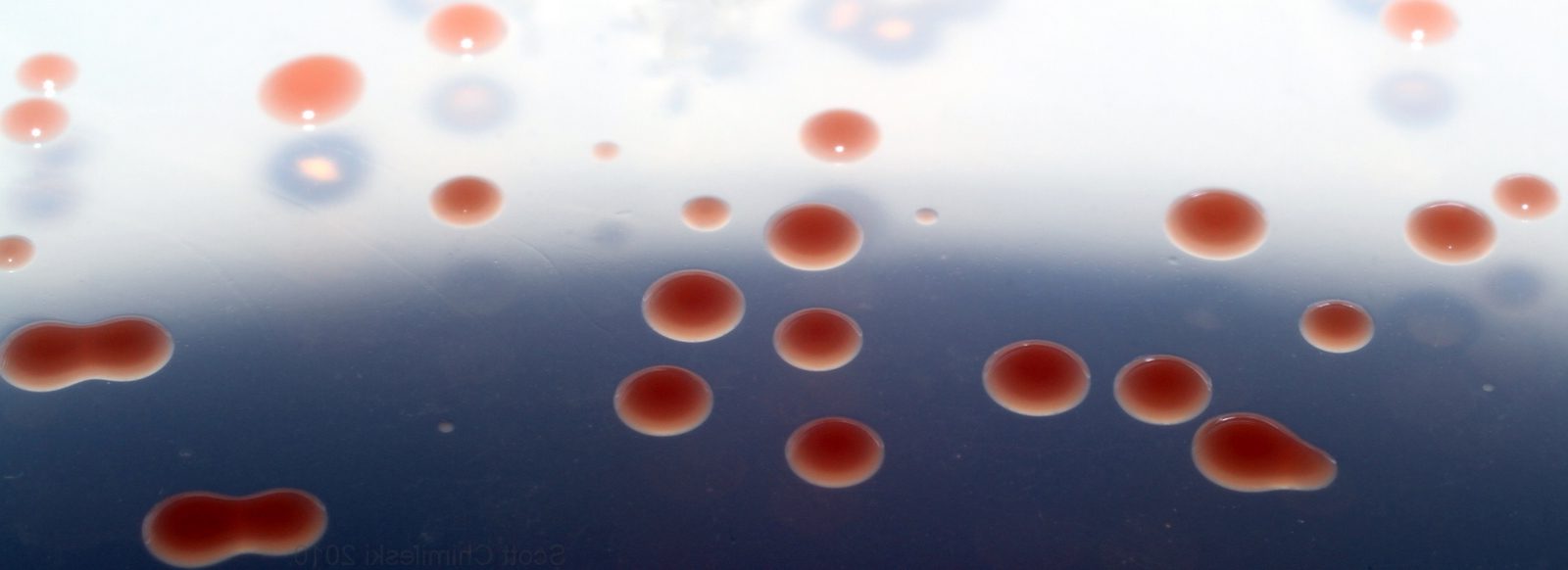Evolution and Ecology of Haloarchaea
A systems approach towards the study of prokaryotic speciation

Haloferax volcanii colonies
The forces that drive evolutionary processes in prokaryotes are not independent. The effects of classic biogeography through physical dispersal and horizontal gene transfer (HGT) within environments are both relevant, and not mutually exclusive. Further, the mechanisms through which horizontal gene flow occurs are often coupled with cell-to-cell communication (e.g., quorum sensing), biofilm formation, and other endogenous cellular systems, exposing a complex web of interactions. The sum effect of these interacting systems leads to the formation of new prokaryotic groups over time, in a manner specific to the environment and the microbial group in question.
Our main goal is to understand the evolutionary processes acting on prokaryotic organisms and tease apart interactions between them, to appreciate prokaryotic speciation from a systems-level. To achieve this, we 1) continue to build a foundation of population genetics data, and 2) ask the question: how have the modern trends and relationships that we observe and represent on phylogenetic trees come about? In addition to physical isolation, how might the dynamics of HGT mechanisms and related systems that we can study today in the lab bias gene transfer and shape microbial populations going forward?
To answer these questions we concentrate on hypersaline adapted Archaea (haloarchaea) as model organisms. Haloarchaea have specialized mechanisms for exchanging genetic information horizontally and live in island-like habitats which aid in simplifying or sorting the evolutionary pressures that effect their distribution, adaption, and variation.
